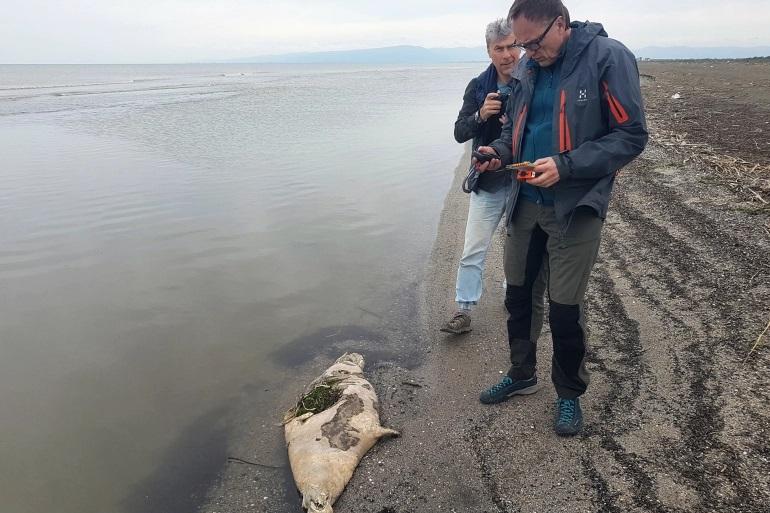The seal population of the Caspian Sea has for decades suffered from overhunting and the effects of industrial pollution. Photo: Marine Mammal Research and Expedition Center/AFP
By Patryk Krych | The World Daily | MAY 7th 2021
Well over 150 corpses of the endangered Caspian seals have been found washed up on the shores of Russia’s Caspian coasts, as a cause of either pollution, poaching, or of overfishing according to researchers.
The dead seals have washed up on the Caspian Sea coasts in Russia’s republic of Dagestan over the course of several days now, the researchers said. Thus far, at least 170 of the seal carcasses have been found along the shores, with no certainty as to the direct cause of the mass deaths yet – only speculations.
On Thursday, Viktor Nikiforov of the Moscow Marine Mammals research centre told AFP that “These are the dead animals that we saw, photographed and whose GPS coordinates we noted.”
He added that the cause is likely either “industrial pollution, fishing or poaching when seals get caught in the nets,” and that “Maybe this is the consequence of climate change or several causes at the same time.”
Researchers are currently investigating the directs causes of the mass deaths, with the Federal Fisheries Agency in the North Caucasus having stated that it would be sending out inspectors to get a more accurate body count on the washed-up carcasses. The Investigative Committee added that it too would be looking into the cause of the crisis.
A number of the seal carcasses were found to have been entangled in fishing nets according to the director of the Institute of Ecology and Sustainable Development of the Daghestan State University, Alimurad Hajiyev.
The link to entangled nets would align with the UN Environment Programme’s warnings that the Caspian Sea “suffers from an enormous burden of pollution,” with local authorities having reported on a similar situation in December 2020 when over 300 dead seals were discovered washed up on the coasts of Dagestan’s Caspian shore.






